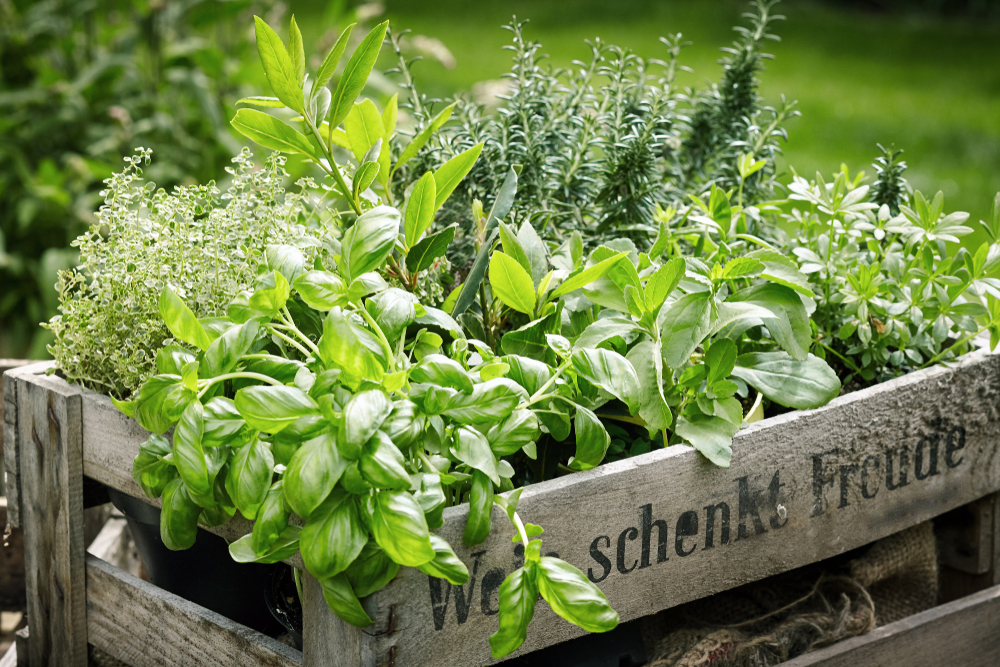Spring Gardening: Herbs and Vegetables Edition

One of the best things about spring is that it’s the perfect time to start a garden! If you’re looking to add some fresh, delicious herbs and vegetables to your cooking this spring and upcoming summer, then you’ve come to the right place. Here are some tips on how to grow herbs and vegetables in your spring garden.
What you need to know before you start
Before you get started on your garden, it’s essential to prepare properly. Here are some key components to consider before start your garden.
- Choose the right location - First and foremost, you’ll need to decide where to place your garden. Consider how much space you have, the amount of sunlight your plants will need, and how it’s situated with the rest of your property (e.g. near the house or in a more private area).
- Research the best type of soil - Different types of plants need different types of soil. It’s important to research the ideal soil type for your plants and make sure it’s the right type for the climate you live in.
- Consider what tools are needed - Gardening tools are essential for gardening success. Make sure you have all the tools you’ll need to till the soil, water your plants, and turn compost.
- Plan out your garden - Before planting anything, try laying out the garden plan on paper or use a garden plan software to get an idea of what it’ll look like. This will help you visualize the look and feel of your garden and plan what type of plants and vegetables you want to plant.
Creating and following a plan will help ensure a successful and bountiful spring garden.
What you can Grow
Growing herbs and vegetables in your spring garden can be a rewarding experience. You will have your own fresh produce, and learn a lot in the process! Here are some of the best herbs and vegetables to plant in your garden this year:
- Lettuce – A low-calorie and nutrient-dense vegetable, lettuce is a great addition to many dishes.
- Tomatoes – Sweet and juicy, tomatoes are a great addition to salads, sandwiches, and more.
- Zucchini – This versatile vegetable is great for roasting, sautéing, or even making zucchini noodles.
- Herbs – Herbs like basil, oregano, sage, and thyme can be used in a variety of dishes to add flavor.
- Carrots – Nutrient-dense and crunchy, carrots are great for snacking and can also be used in savory dishes.
Tips and Tricks for a Successful Spring Garden
To get the most out of your garden, here are some helpful tips and tricks that you can use to ensure it’s a success:
- Research Your Plant Varieties – Be sure to research each variety you want to plant and take into consideration their specific growing needs and preferred climates.
- Test Your Soil – Make sure to test your soil’s pH levels and nutrient composition to ensure you are planting in the most nutrient-rich soil for your plants.
- Start Seeds Indoors – Starting seeds indoors is a great way to give your plants a head start, and it’s also a great way to save money, as you won’t have to purchase separate seedlings if you can grow your own.
- Amend Your Soil – Make sure to amend your soil with compost and other organic matter to ensure that your plants get the nutrients they need and can thrive.
- Know Your Local Climate – Be sure to know your local climate and the dates of the last and first frost, as this will help you determine when it’s safe to plant.
- Mulch – Mulch is an effective way to protect your plants from the cold and retain moisture in the soil for longer periods.
With the right care and attention to detail, anyone can successfully grow delicious herbs and vegetables in their spring garden. Be sure to conduct your own research to understand exactly what your specific plants need. If you follow the specific tips and tricks outlined in this article, you’ll be sure to have a beautiful and productive spring garden in no time.


